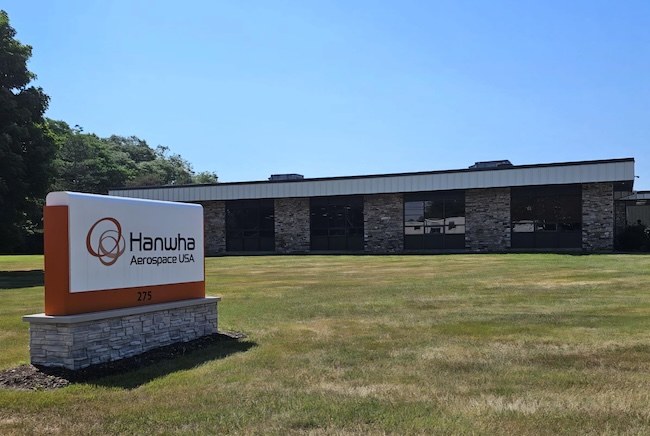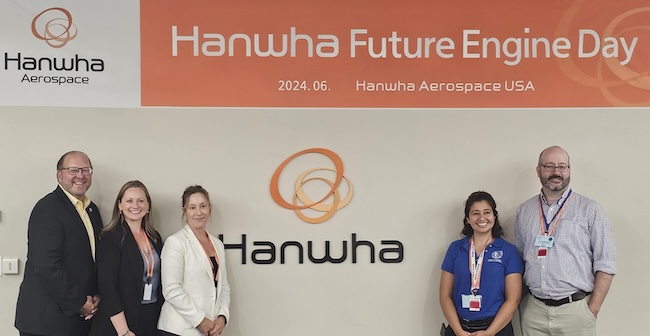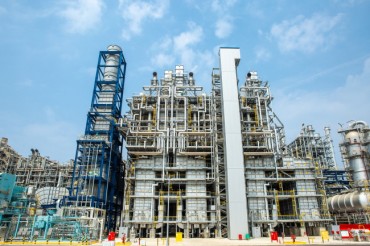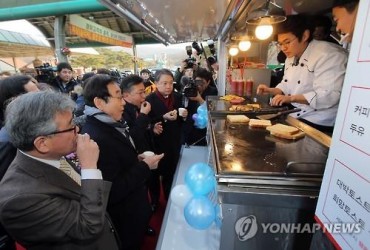
Hanwha Aerospace USA in Newington, Connecticut, is seen in this photo provided by the company. (Image courtesy of Yonhap)
CHESHIRE, Connecticut, Jul. 1 (Korea Bizwire) — Aerospace Alley is one of the world’s largest and most experienced concentrations of aerospace companies, housing around 130 parts companies and top-tier original equipment manufacturers (OEMs) within an 80-kilometer radius of Hartford, Connecticut.
Anchored by internationally renowned companies, like jet engine-maker Pratt & Whitney, this industrial ecosystem supports approximately 15,500 manufacturing jobs and had generated an annual gross domestic product of US$6.6 billion as of 2022, with over 25 percent of all U.S. aircraft engine and parts manufactured in the region.
Hanwha Aerospace Co., a key defense and aerospace unit under Korean conglomerate Hanwha Group, joined this unique supply chain after acquiring EDAC Technology in 2019 and establishing Hanwha Aerospace USA (HAU). This move was part of Hanwha’s strategy to enter the U.S. aviation parts market.
Hanwha chose Aerospace Alley as its U.S. foothold because the region offers a full value chain of material sourcing, production and consumption, with suppliers and OEMs operating in a clustered area.
“Bringing a name such as Hanwha into the community helps some of the local businesses that are already here and also helps the rest of the supply chain in the area, because it’s bringing in more work and that work is shared amongst the other suppliers in the area,” Jessica Taylor, executive director at the Aerospace Components Manufacturers (ACM), said during a media event at HAU’s operation in Cheshire last Tuesday. The ACM has 130 member companies operating in Connecticut, including HAU.
HAU operates in four regions of Connecticut — Cheshire, Newington, Glastonbury and East Windsor — with a total of 550 employees.
In collaboration with many local material and parts suppliers, HAU manufactures essential static and rotating aircraft engine components, including containment cases, integrated blade rotors, hubs and turbine disks.
Since its launch in 2019, HAU’s annual sales have increased by 20 percent, reaching a record 252.1 billion won ($182.4 million) in 2023.

A Google Map view of Aerospace Alley in the state of Connecticut is seen on the website of the Aerospace Components Manufacturers. (Image courtesy of Yonhap)
The Aerospace Alley community has welcomed Hanwha’s entry and its collaborative efforts over the past four years.
“I’m very, very grateful for Hanwha for being here and for staying here,” Connecticut State Representative Liz Linehan said. “I’m extremely grateful for a few different things. One is for taking companies that were part of the fabric of this community to begin with and enveloping them.”
She said HAU is very “special” in recruiting and retaining talents in the region through industry-academia partnership programs with local schools, offering on-site vocational opportunities and social insurances.
Last year, HAU invested $200,000 to set up the Hanwha Aerospace Mechanical Engineering Senior Project Design Lab at Central Connecticut State University, aiming to strengthen the talent pool by nurturing engineering talent in the neighborhood.
Over the past years, HAU has recruited around 100 technical talents from local universities and high schools.
“My hope is that they will continue in this leadership position,” Linehan said. “So the programs they’ve put together can serve as a beacon for future companies to come in, and really recruit and maintain very good quality workers here in the state of Connecticut.”

Participants of Hanwha Future Engine Day pose for a photo at Hanwha Aerospace USA’s operation in Cheshire, Connecticut, on June 25, 2024, in this photo provided by the company. (Image courtesy of Yonhap)
Looking ahead, HAU is at the forefront of Hanwha Aerospace’s long-term plan to manufacture engines for military aircraft, such as fighter jets, and compete with engine-making giants, like Pratt & Whitney and GE.
As a first step, Hanwha Aerospace plans to achieve 2.9 trillion won in sales from its global aviation engine parts business by 2032, with operations in Changwon, South Korea, and Hanoi, Vietnam.
Next, Hanwha aims to create a Korean version of Aerospace Alley in Changwon and its surrounding areas, where many local aerospace companies, including the Korean Aerospace Industries (KAI), are located.
This “Changwon Alley” will have its own industrial ecosystem, featuring Hanwha Aerospace as an OEM, and other parts and material suppliers.
Paul Lavoie, chief manufacturing officer at the state government of Connecticut, emphasized that HAU’s experience in the U.S. aviation market and cutting-edge technologies could play a leading role in realizing this vision.
“Aerospace alley was created by industry. It’s not created by the government,” Lavoie said. “It was an industry-led initiative where the manufacturers in this sector got together and decided that they wanted to have this collaboration and this cooperation.”
(Yonhap)






